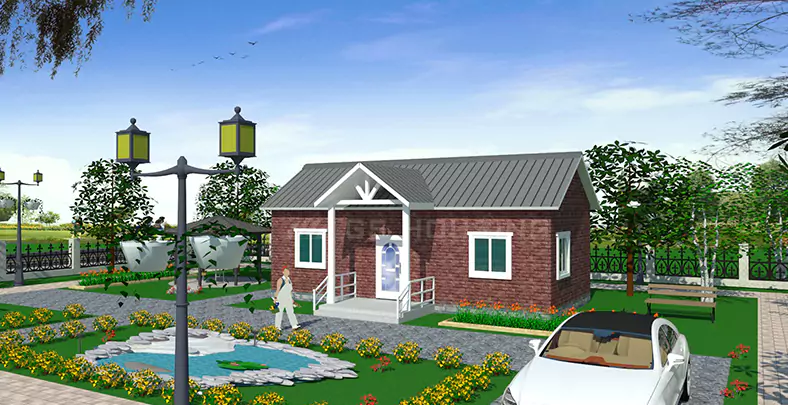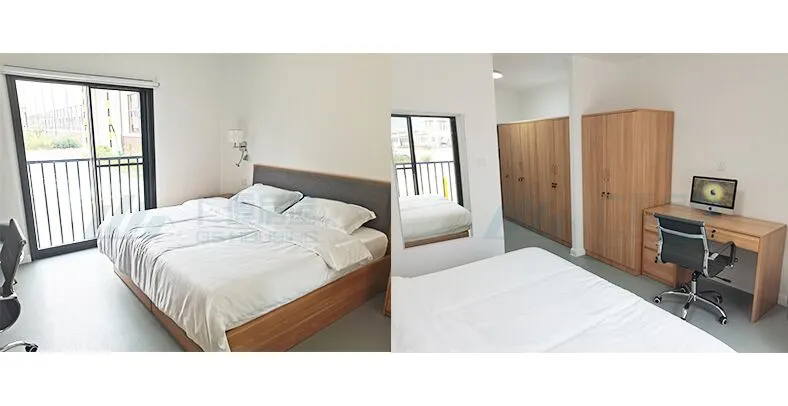Could Container House Innovation Reshape Emergency Housing Infrastructure
Could Container House Innovation Reshape Emergency Housing Infrastructure
When disaster hits, speed and dignity are everything. Tents and flimsy shelters often leave folks feeling unsafe and hopeless. Flat Packed Container Houses are changing that. They’re fast, scalable, and give people solid, comfy homes that bring back shelter and hope.

The Urgent Need for Scalable Emergency Housing Solutions
Main Challenges Face Current Emergency Housing Infrastructure
Disasters like floods, wars, or money troubles make emergency housing super important. But old-school shelters can’t keep up with big crises or tight timelines. Most temporary setups are weak, lack bathrooms, or don’t handle weather well. They’re meant for quick fixes and don’t offer the comfort or respect people need.
Traditional Temporary Shelters Fall Short in Meeting Humanitarian Needs
Regular emergency shelters, like tents or thrown-together buildings, skimp on insulation, privacy, and safety. They break down fast in bad weather and can’t be reused much. Plus, they need tons of on-site work and make a mess when set up or taken down.
Rapid Deployment Combined with Dignified Living Conditions Faces Growing Demand
Speed matters in emergencies, but so does quality. Displaced folks need homes that go up fast without cutting corners on safety or respect. That means clean water, power, air flow, and personal space. You want a solution that’s quick but also feels human—one that shelters and lifts spirits.
Advantages of Container-Based Emergency Housing
Rapid Deployment & Modular Construction
Speed matters in disasters. A GS Gehäuse flat pack container house is manufactured in factories with standardized steel frames, wall panels, and insulation already built in. Once delivered, the modules are craned into place and connected—one floor can be installed in just 1–2 days.
During the COVID-19 crisis, GS Housing built 66 emergency hospital compounds in China within weeks. These facilities provided more than 29,728 units, accommodating 120,000 people simultaneously. That kind of scale and speed simply isn’t possible with bricks and mortar.
Structural Strength & Weather Resistance
Emergency housing must withstand more than daily wear. GS Housing uses SGC340 galvanized cold-rolled steel for main beams, with anti-corrosion graphene coatings tested for 20-year performance. Roof panels are designed with integrated drainage, handling rainfall levels up to 250mm in under 20 minutes.
The wall panels, filled with 50–120mm basalt wool insulation, provide Class A fire resistance and maintain comfort in extreme heat or cold. In earthquake-prone areas, the units are tested up to 8-degree seismic resistance and 12-grade wind loads, making them reliable in disaster zones.
Cost-Effectiveness & Environmental Sustainability
Flat pack container houses reduce construction waste by up to 70% compared to traditional methods. Since modules are produced on an automated line, material usage is tightly controlled. Transport is easier too: the flat pack design allows three to five houses in one shipping container, lowering logistics costs.
For NGOs and governments with tight budgets, the cost predictability is just as important as the savings. Once the emergency phase is over, the same houses can be relocated, stored, or resold—turning short-term spending into long-term assets.
From an environmental perspective, factory-based production keeps building sites cleaner and minimizes dust, noise, and water use. GS Housing’s structures can be dismantled and reused multiple times instead of ending up as debris. Energy efficiency is also improved: modules are designed with airtight joints, 50–120mm basalt wool insulation, and double-layer coated panels, which reduce heating and cooling demands by 10–15% compared with conventional site-built housing.
Design and Flexibility in Deployment
From Temporary Shelters to Community Spaces
Each unit can function as a dormitory, office, clinic, or kitchen, depending on interior layout. They come with pre-installed electrical wiring (CE, UL, EAC certified), plumbing, and PVC flooring, so people can move in immediately.
In larger camps, modules can be stacked up to three stories, connected with corridors, and expanded with dining halls or classrooms. The flexibility means a refugee camp can evolve into a semi-permanent community without replacing the core structures.
Expandable & Adaptable Modular Designs
One striking feature is scalability. A single 18-square-meter unit can stand alone as a medical booth, or connect with dozens of others into a hospital wing. GS Housing has delivered over 4,480 units to the NEOM project in Saudi Arabia, showing that the same technology used in luxury city projects can also build emergency towns in record time.

Social & Community Impact
Enhancing Community Participation & Recovery
Shelter is more than four walls—it’s dignity. Container houses allow layouts that separate family rooms from common facilities, helping maintain privacy and a sense of normal life during chaos.
In disaster relief projects in China, GS Housing often included canteens, laundry rooms, and clinics alongside housing blocks. These shared spaces gave residents a structure of daily life, speeding recovery and reducing tensions in crowded camps.
Design for Dignity: Comfort and Privacy in Emergencies
Unlike tents that collapse in storms or gymnasiums crammed with beds, container homes offer insulation, soundproofing, and lockable doors. For vulnerable groups—elderly, women, children—this level of security and privacy can make the difference between survival and recovery.
GS Housing’s Fallstudien
2016 Flood & Landslide Relief Housing, Hunan Guzhang County
After brutal floods and landslides, GS Housing sent prefabricated container shelters that worked on rough terrain. Families got weather-proof rooms in days, avoiding long-term displacement.
2018 Wenchuan Earthquake Relief Camps
In the aftermath of the earthquake, GS Housing supplied modular camps with dormitories, kitchens, and medical clinics. The units were designed to handle aftershocks and supported thousands of survivors.
2020 COVID-19 Emergency Hospital Compounds
During the pandemic, GS Housing’s modular units were repurposed as negative-pressure hospital wards. Entire compounds were delivered, installed, and made operational in under two weeks—critical in controlling outbreaks in several Chinese provinces.
Challenges and Limitations
Insulation, Contamination, and Health Considerations
Container houses fix speed issues, but insulation needs care to stop dampness. Old shipping containers might have chemical leftovers, so emergency units must be brand-new or cleaned to strict health rules.
Logistical Constraints and Site Preparation
Flat pack containers save shipping space, but remote areas can still be tricky to reach. Setup needs cranes and prepped ground, so working with local governments is a must.
Conclusion — Towards Resilient Emergency Housing Infrastructure
Container house innovation is no longer an experiment. From flood relief villages in China to pandemic hospitals, modular housing has proven its worth. The real challenge now is scaling it into national disaster response systems.
For NGOs, governments, and relief planners, the message is clear: prefabricated container housing is not only fast and durable, it is a path to long-term resilience. Every emergency leaves behind lessons. With the right investment, these lessons can turn temporary housing into permanent infrastructure for the future.
FAQ (häufig gestellte Fragen)
Q1: How long does it take to deploy a container house after delivery?
A: Most units go up in hours. All major parts—like plumbing and power—are pre-built, so there’s no extra work needed.
Q2: What is the lifespan of these emergency houses?
A: With galvanized steel structures and graphene coatings, GS Housing container houses last 20+ years, even with relocation and repeated use.
Q3: Can container houses be customized for medical or educational use?
A: Yes. GS Housing has delivered units configured as clinics, classrooms, kitchens, and even negative-pressure hospital wards. All wiring, plumbing, and interior finishes are factory-installed before shipping.



